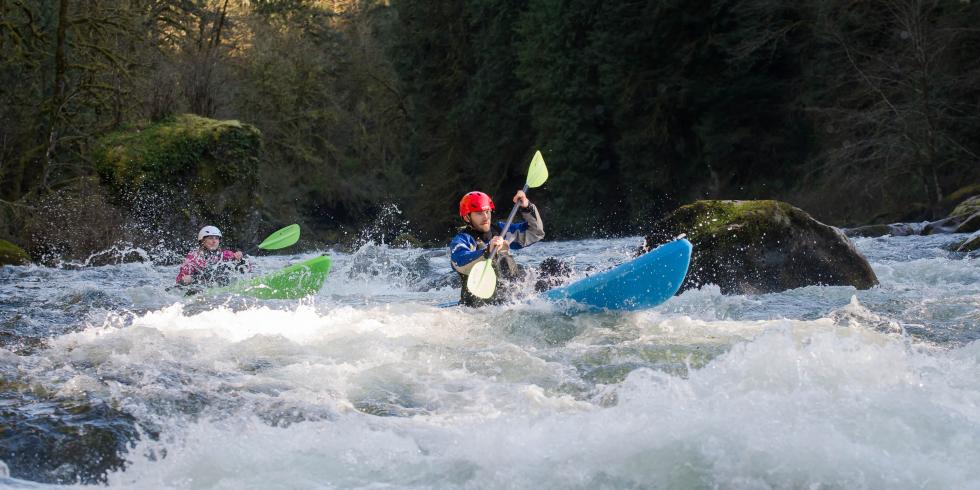BEGINNER’S BEST BETS REGIONALLY
WEST COAST:
SKYKOMISH RIVER, WASH.
An hour’s drive northeast of downtown Seattle gets you to this classic 2.5-mile stretch from Railroad Bridge to Big Eddy, which is considered Class II, but like most runs, varies with water levels. Put in at the Railroad Bridge and bite off as much of the challenging first rapid as you choose. Two rapids downstream can approach Class III. When you’re ready to step it up to Class III venture upstream to add on a couple more miles of this whitewater escape from the Emerald City—just keep an eye out for Class IV Boulder Drop (it’s an easy portage, for more info, visit
americanwhitewater.org). Runners-up: Class II-III sections of Oregon’s Rogue; California’s South Fork of the American.
ROCKIES:
ARKANSAS RIVER, COLO.
Well known for its heavily used Brown’s Canyon section as well as the challenging upper Pine Creek and Numbers sections, the Arkansas is also home to a great roadside Class II-III, 8.7-mile run, from Pinnacle Rock to the entrance of the looming Royal Gorge. Dozens of commercial outfitters operate on the Arkansas so your newbie friends can get a rush rafting the tougher sections even if they are not ready to paddle them solo. Talk to the folks at Colorado Kayak Supply in Buena Vista, CO about the 'Milk Run'. Runners-up: To hook up with local paddlers, check out the Arkansas in Salida at the F Street bridge. For a more wilderness-style run that’s mostly roadside, the Snake River near Jackson, Wyo., offers scenic Class I-II with an April-October season.
MIDWEST:
WAUSAU, WIS.
Billed as “the local paddling community with an international reach” the Wausau Whitewater Park features a world-class slalom course, whitewater canoe and kayak clinics, races and 13 annual recreational release dates from April through September. It’s open 10 a.m. to 4 p.m., with ACA Membership required, and available on site starting at $5. Visit wausauwhitewater.org for more info. Runners-up: The National Wild & Scenic section of the Buffalo River (Arkansas) features 135 miles of free-flowing splendor; Elkhorn Creek, Ky., is another Midwest favorite.
NORTHEAST:
DEERFIELD RIVER, MASS.
The Deerfield features sections ranging from Class I to IV, with the 10-mile Fife Brook to Zoar Gap run most popular with novice boaters and instructors. It’s mostly Class II except for Zoar Gap where things pick up to Class III. This section of the Deerfield is dam controlled and runs 106 days April-October. Like its southern sister, the Nantahala, it has cold water so dress warmly. Visit zoaroutdoor.com for more information. Runners-up: Pennsylvania’s Slippery Rock Creek and Middle Youghiogheny; Maine’s Dead River at low flows and Lower Kennebec below the Gorge.
SOUTHEAST:
FRENCH BROAD RIVER, N.C.
Among the plethora of great entry-level runs that grace the Southeast, it’s hard to beat this big river just north of Asheville. The three-mile section from Barnard to Stackhouse is a local favorite—even run in the driest droughts or after the biggest floods. Beginners prefer medium to low flows (about 2000 cfs or lower) to take full advantage of its wide, friendly rapids. The water is not cold, the scenery through Pisgah National Forest is outstanding, and intermediates can continue downstream to Hot Springs through a pair of Class III-IV rapids. Runners-up: Lower Green and Nantahala (N.C.), Chattooga Section II (Ga./S.C.), Hiwassee (Tenn.), Coosa (Ala.), Cartecay and Upper Chattahoochee (Ga.).
CANOE & KAYAK – Harrison Metzger


